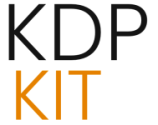The Evolving Landscape of Digital Publishing in India: Accessibility and Agility Lead the Charge

The Indian publishing industry is undergoing a profound metamorphosis, driven by the relentless march of digital technologies and an escalating demand for content that is both accessible and agile. This isn’t merely a fleeting trend; it represents a fundamental paradigm shift in how information is conceived, disseminated, and consumed across the nation. The sector’s vibrant dynamism is capturing widespread attention, underscoring its burgeoning significance within the broader media and technology ecosystem. As digital publishing matures in India, its advancements are poised to cast a long shadow, influencing not only the publishing world but also the realms of education, commerce, and cultural transmission.
Accessibility: The Bedrock of Digital Publishing’s Expansion in India
A pivotal catalyst propelling the growth of digital publishing in India is the unwavering emphasis on accessibility. This commitment translates into making content readily available to a broader demographic, effectively dismantling geographical barriers and catering to a diverse spectrum of user needs. Digital platforms inherently possess an advantage over traditional print media, offering a level of accessibility that facilitates content delivery to remote locales and individuals with specific requirements. This focus on accessibility is fundamentally reshaping the publishing landscape, fostering a more democratic distribution of knowledge and information.
Bridging the Digital Divide: Ensuring Inclusivity
Concerted efforts are actively underway to bridge the digital divide, thereby guaranteeing that a greater number of Indians can access digital publishing platforms. These initiatives encompass enhancing internet penetration and ensuring the availability of affordable digital devices. A collaborative synergy between governmental bodies and the private sector is instrumental in cultivating a more inclusive digital environment, where the manifold benefits of digital publishing are within reach for all societal strata.
Inclusive Content Formats: Catering to Every Reader
Digital publishing empowers the creation of content in a myriad of formats, thoughtfully designed to accommodate diverse learning styles and preferences. This includes, but is not limited to, e-books, audiobooks, interactive articles, and multimedia-rich content. The capacity to offer content in multiple, accessible formats is indispensable for engaging a varied readership and ensuring that information is comprehensible for everyone.
User-Centric Design Principles: Enhancing the Reading Experience
The adoption of user-centric design principles is paramount in rendering digital publishing truly accessible. This necessitates the design of platforms and content with the end-user firmly in mind, meticulously considering factors such as intuitive navigation, optimal readability, and seamless compatibility with assistive technologies. A steadfast focus on user experience ensures that digital publications are not only available but also exceptionally usable and enjoyable for all.
Agility and Innovation: Driving Digital Publishing Solutions
Beyond the critical aspect of accessibility, the Indian digital publishing sector is distinguished by its remarkable agility and its innovative approach to delivering solutions. Publishers are adeptly harnessing technology to respond with alacrity to market demands, to experiment with novel business models, and to offer bespoke experiences to their audiences. This inherent adaptability is of paramount importance in a digital landscape characterized by rapid and continuous change.
Rapid Content Development and Deployment: Staying Ahead of the Curve
Digital technologies equip publishers with the capability to develop and deploy content at a significantly accelerated pace compared to traditional methodologies. This agility enables them to remain relevant within a fast-paced news cycle and to adapt swiftly to evolving reader interests. The ability to iterate and update content dynamically represents a substantial advantage in the digital domain.
Personalized Reader Experiences: Building Deeper Connections. Learn more about Printing
Digital platforms facilitate the delivery of personalized content, empowering publishers to tailor recommendations and content streams based on individual user preferences and behavioral patterns. This personalization significantly enhances reader engagement and fosters loyalty, ultimately cultivating a more satisfying and relevant experience for each user.
Emergence of New Business Models: Diversifying Revenue Streams
The digital transformation has been a powerful impetus for the creation of innovative business models. These models extend beyond conventional sales, encompassing subscription services, freemium offerings, and direct-to-consumer engagement strategies. Such novel approaches provide publishers with enhanced flexibility and avenues for revenue diversification.
Leveraging Data Analytics for Content Strategy: Informed Decision-Making
Publishers are increasingly integrating data analytics into their operations to gain a profound understanding of reader behavior, identify trending content, and refine their strategic approaches. This data-driven methodology facilitates more informed decision-making, leading to the creation and distribution of more impactful content.
Technological Advancements: The Engine of the Digital Shift
A confluence of technological advancements is serving as the foundational support for the growth and transformation of digital publishing in India. These innovations are not only streamlining publishing processes but also unlocking new frontiers for content creation and consumption.
Cloud Computing and Scalability: Flexible Infrastructure
The widespread adoption of cloud computing offers publishers a scalable infrastructure, enabling them to manage substantial volumes of content and traffic without necessitating significant upfront capital investment. Cloud solutions provide inherent flexibility and cost-effectiveness, empowering publishers to adapt seamlessly to fluctuating demands.
Artificial Intelligence and Machine Learning: Enhancing Efficiency and Insight
Artificial Intelligence (AI) and Machine Learning (ML) are being progressively integrated into various facets of digital publishing, spanning content creation, editing, personalization, and distribution. These sophisticated technologies can automate routine tasks, elevate content quality, and furnish deeper insights into reader engagement metrics.
Mobile-First Publishing Strategies: Reaching the On-the-Go Reader
Given the pervasive adoption of smartphones across India, mobile-first publishing strategies have become an absolute necessity. Publishers are diligently optimizing their content and platforms for mobile devices, thereby ensuring a seamless and engaging experience for users who are constantly on the move.
The Role of E-readers and Digital Devices: Expanding Access
The increasing availability and affordability of e-readers and other digital devices are further fueling the expansion of digital publishing. These devices offer a comfortable and convenient reading experience, actively encouraging a broader segment of the population to embrace digital content.
Content Creation and Curation in the Digital Age: A New Frontier
The digital environment has fundamentally redefined the processes of content creation and curation. Publishers are actively exploring novel forms of storytelling and are increasingly engaging with audiences through more interactive methodologies.
Interactive Storytelling and Multimedia Integration: Immersive Experiences
Digital platforms provide the capability to seamlessly integrate multimedia elements, such as videos, audio clips, and interactive graphics, thereby crafting more immersive and captivating storytelling experiences. This departure from static text significantly enhances reader comprehension and overall enjoyment.
User-Generated Content and Community Engagement: Building Relationships
Numerous digital publishing platforms actively encourage user-generated content and foster vibrant online communities. This not only broadens the volume of available content but also cultivates a stronger, more meaningful connection between publishers and their respective audiences.
Ethical Considerations in Digital Content Creation: Maintaining Trust
As digital publishing continues its expansive trajectory, ethical considerations pertaining to content accuracy, copyright adherence, and data privacy assume paramount importance. Publishers are diligently navigating these complex challenges to uphold trust and credibility with their readership.
Distribution Channels and Market Reach: Expanding Horizons
The digital realm presents an expansive array of distribution channels, empowering publishers to reach a global audience with enhanced ease and efficiency. This amplified reach represents a significant strategic advantage over the limitations of traditional print distribution.
Online Retailers and E-commerce Platforms: Gateways to Millions
Prominent online retailers and e-commerce platforms serve as critical distribution hubs for digital publications. Their extensive reach and vast user bases enable publishers to connect with a broad spectrum of potential readers, significantly broadening market penetration.. Learn more about Offering More Accessible
Direct-to-Consumer (DTC) Models: Fostering Direct Engagement
Publishers are increasingly embracing direct-to-consumer (DTC) models, facilitating the sale of content directly to readers through their proprietary websites and applications. This approach grants publishers greater control over customer relationships and provides invaluable direct feedback for continuous improvement.
Social Media and Digital Marketing Integration: Amplifying Reach
Social media platforms and integrated digital marketing strategies play an indispensable role in promoting digital publications and driving targeted traffic. Effective online marketing is crucial for building brand awareness and successfully reaching desired audience segments.
Challenges and Opportunities in the Indian Digital Publishing Market
Notwithstanding the promising growth trajectory, the Indian digital publishing market is confronted with certain challenges that concurrently present significant opportunities for innovation and sustained development.
Piracy and Copyright Infringement: Protecting Intellectual Property
The persistent challenge of combating digital piracy and copyright infringement demands continuous attention. Publishers are actively investing in advanced technologies and robust legal strategies to safeguard their intellectual property within the digital sphere.
Monetization Strategies and Revenue Generation: Ensuring Sustainability
The development of sustainable monetization strategies is fundamental to the long-term viability of digital publishing. Publishers are actively experimenting with a diverse range of approaches to generate revenue in an increasingly competitive marketplace.
Building Brand Loyalty in a Fragmented Market: Standing Out from the Crowd
In a market saturated with a multitude of digital content options, cultivating and maintaining brand loyalty presents a significant challenge. Publishers must consistently deliver high-quality, engaging content to effectively retain their audience base.
The Potential for Cross-Media Integration: Creating Synergies. Learn more about printing
There exists a substantial opportunity for cross-media integration, wherein digital content is thoughtfully complemented by print, audio, and video formats. This integrated approach has the potential to create richer user experiences and significantly expand market reach.
The Future Outlook for Digital Publishing in India: A Landscape of Growth
The trajectory of digital publishing in India unequivocally points towards continued expansion and relentless innovation. The sector is exceptionally well-positioned to capitalize on the nation’s burgeoning digital infrastructure and its rapidly growing digitally-savvy populace.
Continued Technological Adoption: Embracing the Next Wave
The ongoing adoption of emerging technologies, including advancements in AI, Virtual Reality (VR), and Augmented Reality (AR), is poised to shape the future of digital publishing, unlocking novel possibilities for content creation and audience engagement.
Expansion into Vernacular Languages: Unlocking New Markets
As internet penetration continues to expand into non-urban areas, a burgeoning demand for digital content in vernacular languages is anticipated. Publishers adept at catering to this demand will undoubtedly uncover significant market opportunities.
The Role of Educational Publishing: Transforming Learning
The education sector represents a colossal opportunity for digital publishing, holding the potential to fundamentally transform learning experiences through the provision of interactive and highly accessible digital resources.
Government Support and Policy Frameworks: Enabling Growth
Supportive government policies and robust regulatory frameworks that actively encourage digital innovation and diligently protect intellectual property will be crucial determinants for the sustained growth and prosperity of the digital publishing industry in India.
Conclusion: A Dynamic and Promising Sector Poised for Success
In summation, digital publishing in India stands as a dynamic and rapidly evolving sector. Its unwavering commitment to delivering more accessible and agile digital solutions, coupled with the strategic adoption of technological advancements and innovative business models, firmly positions it for enduring success. While the challenges that lie ahead are indeed significant, they also serve as potent catalysts for further innovation, heralding a vibrant and promising future for digital content creation and consumption across India. The ongoing developments within this sector are undoubtedly worthy of close observation, as they hold the transformative potential to redefine the publishing landscape, not only within India but on a global scale.




